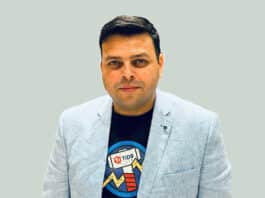
Any business which requires a data centre or a cloud service primarily focuses on total cost of ownership (TCO). Since every data centre requires a lot of IT infrastructure which includes 24*7 uninterrupted power, uninterrupted network connections, cooling, fire suppression system and redundant architecture in every aspect, the cost of in-house data centre operations is always high.
TCO
Every medium and big size customer first wants to evaluate TCO between commercial cloud service provider and its own data centre. Therefore, when customers do detail analysis considering 3 or 5 year project plan, they look for at-least 30 percent cost reduction when adopting cloud services. Therefore primary reason of moving to any data centre/cloud service provider is cost reduction. So while evaluating any cloud offer, customer should check if he is really going to get good cost benefits.
Partner rather than vendor
In today world, there is hardly any business which can survive without IT infrastructure. IT infrastructure is backbone of any business. In fact, till few years back, IT was an enabler for business however over the period of time business models are completely based on IT and IT has become the driving force. Primary examples of such business are banking, e-commerce, aggregation services and automation among others.
Traditional approach has been to procure all the IT hardware infrastructure and required software. In this kind of approach, IT suppliers have always been vendors of business houses. Few years ago, businesses started obtaining services from data centre instead of procuring IT infrastructure. In this model also, data centre were playing role of IT vendor for business houses.
Vendor centric approach has always been based on service level agreement (SLA) between the parties. However in this approach vendor has no accountability of business profit/loss of the customer. Vendors provided services according to SLAs and their role into service consumers business was limited. SLA bindings are always attached with some remedy which is not really effective from business perspective of service consumer. Therefore, a new business model have started evolving where cloud service providers become virtual business partner of their customer. New billing models such as:
Per transaction billing – Where customer pays for every financial transaction that takes place in the system.
Per User billing – Where customer pays for the number of users in the system.
Such kind of models makes the cloud service provider a partner of business. In such models, no hardware/ software sizing is required. Customer doesn’t have to bother about any hardware sizing, type, capacity, scalability and so on. Cloud providers understand the technology requirement of business, IT infrastructure required for customer business and decides per transaction billing price. In such pricing model, cloud provider virtually becomes business partner of cloud customer as the CSP earns money only when his cloud customer earns. So, virtually cloud service provider becomes accountable for loss as well as profit. Thus he indirectly becomes business partner of his cloud customer.
Now as cloud service provider is virtual business partner, so he would certainly take care of following important deliverables required for any business running from his data centres.
- Data centre IT infrastructure uptime.
- Application availability. Irrespective of any data centre power or cooling uptime, uptime of customer’s service becomes foremost priority. If services are running, then only cloud customers can actually deliver service to their end customer and earn money. Therefore customer should also demand service availability in SLA instead of data centre Power or Cooling availability.
- Application delivery time to end customer. This is very important aspect of any cloud service and important factor to have sustainable growth for any cloud customer. Till date, knowingly or unknowingly, many customers were ignoring this aspect. The user experience of any service is directly proportional to its sustainability. This can be obtained by delivering the results in the minimum time possible. Nowadays, if transactions take time, users are not ready to wait and they move on to using services from other providers. On the other hand, if the response time is good, certainly customer experience of service becomes good and they continue with service provider.
- Data security measures. Data security was vital, is vital and shall always remain at the core of any business. Cloud customer’s business data should always remain secure. Data is one thing that can get stolen and still remains where it is making it look like it is untouched.
- Automated Scalability of resources whenever there is spike in demand. Nowadays most of the businesses are volume driven business rather than margin driven. Therefore there is always possibility of spike in load. In such cases, if spikes are smoothly handled and services are delivered timely, then cloud customer’s business will surely flourish. Cloud customer must always looks for automated scalable IT infrastructure to handle unexpected business spikes.
- Automated delivery of additional IT infrastructure within stipulated time considering business requirements.
- Business resiliency. Since there is risk of downtime either due to system problem or natural calamities, Cloud customers should assess business continuity plans and capabilities of cloud providers with minimum cost. Cloud provider who can provide BCP with minimum time of business function recovery with very less TCO should be preferred.
It is important to note that partner model can be delivered by only a handful of cloud providers who actually have that technology strength to scale up/scale down and scale out/scale in IT resources on demand without user intervention. If there is no transaction load, means no resources are consumed. In that case, cloud providers can share those resources with others.
When transaction increases, IT resources are scaled up and when transaction decreases, IT resources are scaled down. Therefore cloud customer truly pays for amount of resources consumed; not for amount of resources statically allocated to them.




I invite readers to read following two blogs which supplement this article:
Choosing Right IaaS Service Provider for your Enterprise : https://rightcloudz.com/blogs/archives/27
Disruption in Cloud RoI due to third-party add-ons : https://rightcloudz.com/blogs/archives/208